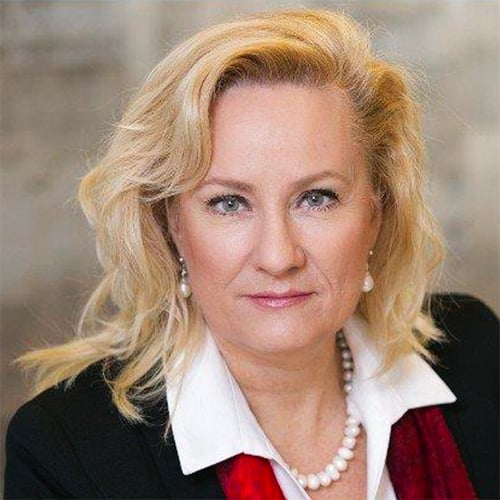With global attention increasingly focused on sustainability, the Asia-Pacific (APAC) region has emerged as an important hub for propelling the evolution of green, social, sustainable, and sustainability-linked bond (GSSSB) markets.
Given the unprecedented investor interest in sustainability, issuers seem to face the dual challenge of meeting sustainability goals while navigating regulatory complexities, particularly those concerning greenwashing risks. In this regard, Second Party Opinion (SPO) services play a crucial role in fostering transparency, credibility, and trust in sustainable finance initiatives.
In 2023, the APAC region witnessed steady growth in GSSSB issuance, recording a 7.6% increase to US$235 billion, according to S&P Global Ratings.1

"Rising rates affect all issuers, regardless of the type of instrument being issued. What we saw is that labelled bonds accounted for around 14% of total bond issuance in 2023, which was a similar proportion to what was achieved in 2022. That's expected to increase at the same pace as conventional bond issuance. Historically, labelled bond issuance has outpaced conventional bonds, but this trajectory has tapered somewhat as the market has evolved and matured," says Matthew Batrouney, Commercial Lead Sustainable Finance APAC, at S&P Global Ratings.
Several factors have driven the labelled bonds' strong growth, including increased adoption of sustainable taxonomies, transparency initiatives, and efforts to accelerate the energy transition.
"In 2023, South Korea, Japan and China accounted for around 70 to 80% of total issuance across the region. They've done this in the last six years and we're expecting that trend to continue," says Batrouney. This growth was primarily driven by social bond issuance from South Korea and an uptick in Japanese issuance across all labels.
Local currency bonds comprised about 70% of GSSSB issuance in 2023. Green bonds maintained their dominance, constituting 53% of total issuance, followed by social bonds at 33%, sustainability bonds and sustainability-linked bonds accounted for 10% and 2%, respectively, while transition bonds accounted for less than 1% and were limited to Japan.
Amidst this burgeoning landscape, issuers are increasingly aware of the risks associated with greenwashing accusations, driving demand for robust mechanisms to ensure the credibility of GSSSB issuance.
Issuers grapple with the need to align their sustainability strategies with evolving regulatory frameworks and investor expectations. There are different areas for issuers to pay attention to depending on the types of transactions. "When it comes to the use-of-proceeds transaction, it's very important for them to be able to identify projects that generate environmental impact or social impact to their target population or the target audience; when it comes to the sustainability-linked transactions, the importance of selecting the right key performance indicators and setting the right sustainability performance targets continue to be the most important things that market participants like investors and civil societies continue to look out for, and it's crucial for issuers to be able to identify the right KPI and set an ambitious target," says Erik Christianto, APAC Head of Product Innovation, at S&P Global Ratings.
Achieving transparency and accountability in reporting sustainable outcomes remains a key focus for issuers seeking to build credibility in the market. "Issuers want quality SPOs that help them mitigate greenwashing risk and require transparency in processes and procedures," says Christianto.
Greenwashing risks
In response to these challenges, SPOs have emerged as valuable tools for issuers seeking to demonstrate their commitment to sustainability and mitigate greenwashing risks. S&P Global Ratings' SPOs offer independent, point-in-time analyses of sustainable finance instruments, including bonds and loans, programmes, and frameworks. By providing independent assessments of sustainable finance instruments, the rating agency offers issuers a credible means of communicating their green credentials and enhancing transparency for investors.
It is important to note that SPOs are distinct from credit ratings; they focus solely on sustainability considerations and do not affect credit quality assessments. "S&P's view is that SPOs provide a similar benefit to the sustainable debt markets that a rating brings to credit – it's about bringing analysis, information, and insight to the market and helping to address information asymmetry," says Batrouney.
Now integrated with the award-winning Shades of Green approach, S&P Global Ratings' SPOs offer comprehensive assessments of GSSSB issuance, encompassing various aspects such as issuer sustainability context, alignment with sustainable finance principles, and analysis of eligible projects.
"Shades of Green, was one of the earliest entrants in the green bond market and an expert in climate and environmental analysis, providing independent, research-based SPOs of green, sustainability, and sustainability-linked financing frameworks, as well as climate risk assessments and impact reporting reviews grounded in climate science," says Batrouney.
An S&P Global Ratings' SPO, now powered by Shades of Green, represents a qualitative opinion of how consistent an economic activity or financial investment is with a low-carbon, climate-resilient (LCCR) future. When determining a Shade, S&P Global Ratings relies on in-house analysis of climate and non-climate environmental factors. There are six possible Shades in the shading scale, namely Dark green, Medium green, Light green, Yellow, Orange, and Red, which reflects how consistent an activity is with achieving an LCCR future (see Chart below).

"To determine a Shade for a project category, we first consider the underlying activities (often called projects) within that project category. If a project category includes activities with multiple shades, we may determine a shading interval across two adjacent Shades. A shading interval cannot extend across more than two adjacent Shades. There cannot be, for example, a shading interval of Dark green to Light green," explains Christianto.
Specific shades for projects
When conducting the SPO for Korea Land & Housing Corp's Social2 Green, and Sustainability Bond Framework, for example, the rating agency identifies specific Shades for the government-owned corporation's different projects.
Eco-friendly houses, green remodeling projects, and energy-efficiency projects that have or are expected to meet national or international green building certifications are identified as "Light green", while investments that facilitate the adoption of solar and wind renewable energy are "Dark green", and investments in clean transportation are also "Dark green".
"Light green" is used to recognize activities representing transition steps in the near term that avoid emissions lock-in but do not represent long-term LCCR solutions. An energy-efficient building is a common type of a "Light green" project. "Dark green" represents activities that correspond to the long-term vision of an LCCR future. A solar power plant is an example of a "Dark green" project.
"Not all green activities are equal, but 'Light green' is also a positive outcome. In our Shades of Green assessment, we recognize the importance of early steps in the transition to an LCCR future. These early stages, generally represented by a 'Light green' Shade, can involve significant emission reductions but do not represent a sustainable future. The 'Dark green' Shade, on the other hand, signifies activities that are in line with an LCCR future," says Christianto.
The use-of-proceeds analysis in the SPO is an important component. "Our use-of-proceeds analysis considers whether commitments made in the financing's documentation are aligned with the relevant use-of-proceeds Principles. We focus on how clearly the issuer sets out its commitment to using the funds raised for sustainability projects.
For us to consider the use of proceeds aligned for a green project, we require project categories directly funded by the financing to be designated one of the three green Shades. For us to consider the use of proceeds to be aligned for social projects, we require that the social projects directly aim to address or mitigate a specific social issue or provide clear social benefits to the target population," adds Christianto.
In Korea Land & Housing Corp's case, all the green project categories under the issuer's Social, Green, and Sustainability Bond Framework are shaded, and all social project categories meet the framework's requirements. The use-of-proceeds analysis of the SPO also explains the issuer's commitment to allocating the net proceeds issued under the framework exclusively to eligible green and social projects.
"The feedback we receive from investors is that they want and value the analytical focus on the entity-level sustainability strategy, even when they are assessing and reviewing a green, social, sustainability or sustainability-linked bond's SPOs. Therefore, beyond alignment with the relevant principles, our SPOs include an issuer's sustainability context as well as project-level analysis using Shades of Green," says Batrouney. The "Issuer Sustainability Context" section examines how the financing contributes to addressing what the rating agency considers to be the issuer's most material sustainability factors.
"We review the issuer's medium and longer-term sustainability strategy. With project analysis we look at our Shades of Green methodology, and provide an opinion in terms of how green, socially sound or sustainable project categories are. For green, it's to what extent an activity contributes to a low-carbon and climate resilient future. For social and sustainability, it's an analysis of the social contribution," says Batrouney.
Environmental ambitions
In the case of Jinan Lixia Holding Group3, a Chinese local government-owned financing vehicle (LGFV), S&P Global Ratings highlights in the "Issuer Sustainability Context" section of the SPO that the issuer publishes limited sustainability disclosures, provides limited disclosure on how it addresses physical risks, and does not address workforce health and safety. However, the issuer expects to allocate the proceeds of the financing under the sustainable finance framework entirely to financing and refinancing eligible green buildings projects.
S&P Global Ratings precisely recognizes the early steps and environmental ambitions reflected in Jinan Lixia's green finance framework and categorizes it as "Light green".
Looking ahead, GSSSB issuance is poised to continue its upward trajectory, and could account for 14% of total bond issuance in 2024, according to S&P Global Ratings. "We've identified a positive correlation between conventional bond issuance and GSSSB issuance over the past 10 years. As the market has matured, we expect the growth trajectory to stabilize, and thus, GSSSB issuance growth will more closely mirror that of the conventional bond market," says Batrouney.
As such, the SPO service will play an increasingly important role in enhancing transparency, credibility, and trust in the market, ultimately contributing to the advancement of sustainable finance objectives.
To learn more about how S&P Global Ratings can help companies with independent, point-in-time assessments that deliver the rigor and transparency that investors and lenders demand, contact us here.
Link to report:









